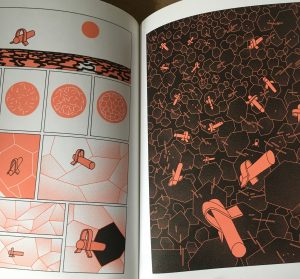In our last post we introduced the idea of aliens encounter and the possibility of creating scenarios that avoid some mind traps such as the anthropomorphization of Others. In SF, other experiences are maybe more interesting, when dealing with things that are supposed to challenge the sensory apparatus of Humankind. How, for instance, can we describe some kind of time travel experience and other forms of dimensional shift ? The 2001 space odyssey star gate sequence is a famous example, and gives the audience a sense of complexity by relying on some graphical canons like the stroboscopic ray of lights and the introspective scenery of early life.
2001’s star gate sequence
This combination has served since in numerous other famous movies :
Contact
With of course some variants linked to cords theory for example :
Interstellar
Some of these visual tricks are rather funny and a bit caricatural such as in Space Balls :
Space Balls
But most interesting is the graphic research that tends to imagine unconventional ways of representing these kind of extreme experiences. Jeremy Perrodeau offers us a fantastic glimpse into a time paradox future with shift in dimension. His comic Crepuscule explores a geographic and simple in appearance way to explore parallel dimension and new world exploration.


Crepuscule – Jeremy Perrodeau
The graphic “simplicity” offered by strips is rather stimulating as it doesn’t need to provide archetypal forms. it can rather focus on the core experience to tell the story and explore some major issues about the time paradox that is at the core of the book.
What is striking in the book is the liberating power of abstraction. By providing geometric forms instead of “realistic” image of actual cinematic movement, the story performs extremely well. In design fiction with tend to favour more realistic representations in order to create conviction, and it is refreshing to see the power of abstraction in doing that kind of job.

